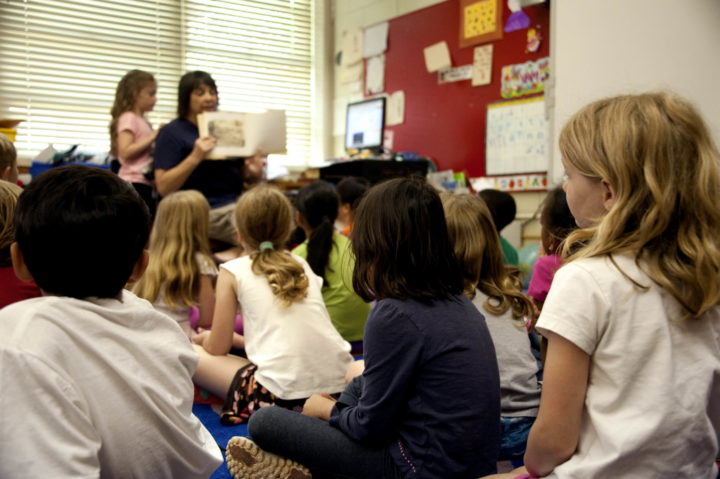Two Queens lawmakers and various community leaders want to see a city education program branch out into more schools.
On Dec. 5, Assemblymen Ron Kim and Edward Braunstein met with NYC Department of Education (DOE) officials to make their case for expanding the Korean Dual Language program. The Dual Language program strengthens students’ native language development and content knowledge while they build their social and academic English skills, according to the DOE.
Kim, who is the first and only Korean-American elected official in New York state, said studies have shown the value of a bilingual education.
“Limited choice can prevent otherwise interested parents from enrolling their kids in enormously beneficial dual language programs,” the lawmaker said. “As a Korean-American whose two daughters will likely grow up speaking English, Korean and Chinese, the importance of this kind of education is clear to me.”
Currently, the only Korean Dual Language Program available in all of the city is at Flushing’s P.S. 32, according to Kim. The program there ends after fifth grade.
“By the time its participants graduate from high school, many may already forget what they learned,” Kim said. “They should be offered a chance to continue their bilingual education, and their peers who live in other similar school districts should have an equal opportunity to enroll in these valuable programs.”
Kim and Braunstein said the growing Korean-American community in the city, particularly in areas of Bayside, Whitestone and Flushing, has led to an increased demand in such programs.
“We understand the importance of children having opportunities to learn other languages in an increasingly interconnected world,” Braunstein said. “Many Korean-American families in my district are often surprised to find that Korean is not offered among the list of available programs, and disheartened by the limited opportunities for their children to learn it.”
Leaders from the Korean-American Association of Greater New York, Korean-Americans for Political Advancement and the Korean Language Foundation also spoke at the meeting in favor of expanding the program.
“For the Korean-American community, with its strong presence in New York, students from kindergarten all the way through secondary school should be given the opportunity to participate in a dual language program,” said Yung Duk Kim, a language education specialist. “I thank Assemblyman Ron Kim for spearheading this meeting and working on expanding the program to more schools.”
In February, Schools Chancellor Carmen Fariña announced 68 new Dual Language and Transitional Bilingual Education programs, which opened at the start of the 2017-18 school session. A total of 24 new programs began in Queens schools in languages including Spanish, Chinese and Bengali.
Braunstein said the December meeting left the local leaders feeling hopeful that the city will expand the Korean Dual Language Program to more schools.
“A bilingual education can foster greater intercultural exchange and understanding, helping to bridge gaps between communities while ensuring New York students of all backgrounds can stay connected to their roots and heritage,” Braunstein said.

































